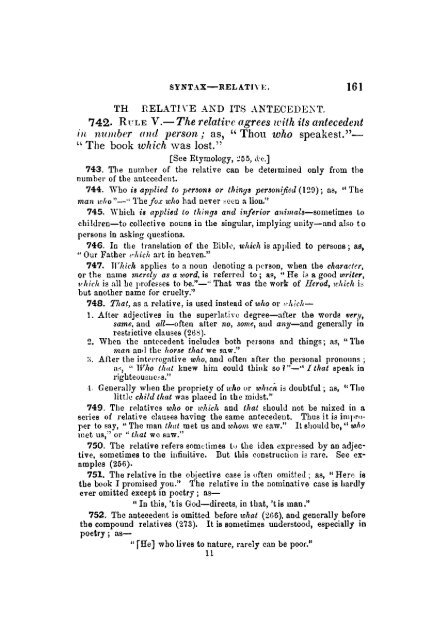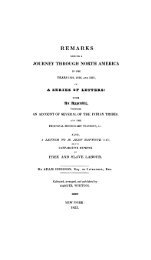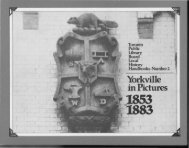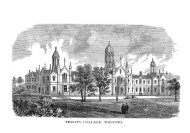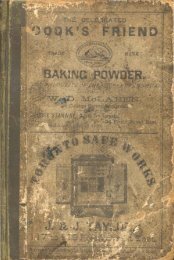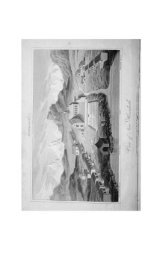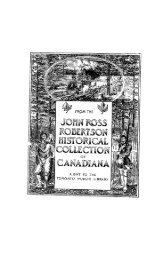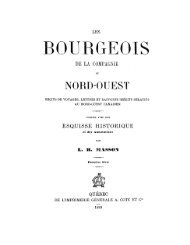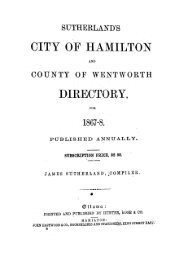alytical practical grammar - Toronto Public Library
alytical practical grammar - Toronto Public Library
alytical practical grammar - Toronto Public Library
You also want an ePaper? Increase the reach of your titles
YUMPU automatically turns print PDFs into web optimized ePapers that Google loves.
TH<br />
SYNTAX-RELATIYE. 161<br />
TIELATI \'E AND ITS ANTECEDEi\T.<br />
742. RrLE Y.-The relative agrees with its antecedent<br />
in number ({mi person; as, "Thou who speakest."<br />
"The book wI! ich was lost."<br />
[See Etymology, ~55, ,~c.]<br />
743. TI,e numbcr of the relative can be determined only from the<br />
number of the antecedent.<br />
744. Who is applied to persons or thing! per30nijieJ (l~()) j as, "The<br />
man "'''0''-'' The fox who had never ,cen a lion."<br />
745. Which is applied to things and inferior animals-sometimes to<br />
children-to collective nouns in the singular, implying unity-and also to<br />
persons in asking questions.<br />
746. In the tl':lnslation of the Bibl,', whicl! is applied to persons j as,<br />
" Our Father "'hieh art in heaven."<br />
747, WlIiclt applies to a noun Jenoting a person, when the character,<br />
or the name merely as a word, is referred to; as, "He i8 a good writer,<br />
1f,hie" is all he l'rofeEses to be."-" That was the work of Herod, ,c!tiel! is<br />
but another name for cruelty."<br />
748. That, as a relative, is used instead of wl!o or ",!tic!t-<br />
1. After adjectives in the superlative degree-after the words I1ery.<br />
same, and all-often after no, some. aUlI any-and generally in<br />
restrictive clauses (268).<br />
2. When thc antecedent includes both persons lind things; liS, "The<br />
man an,l the !torse that we saw."<br />
:i. After the intrrrogntive who, and often after the personal prononns;<br />
n,. " Who that knew him could think so 1"-" I Ilwl speak in<br />
righteousllc,;s."<br />
Generally when the propriety of It'ho or wh,en is doubtful; as, "The<br />
little child that was placed in the midst."<br />
749. The relatives who or wlticlt and tit at should not be mixed in a<br />
series of relnti ve clau8es baving the snme antecedent. Thus it is improper<br />
to 8ay, "The man tltat met us and whom we saw," It should be, .. who<br />
met us;' or "t!tat wo saw."<br />
750. The relative refers sometimes to} the idea expressed by an adjective,<br />
sometimes to the infillitive. But Ihis construction is rare. See exnmples<br />
(256).<br />
751. Tbe relative in the objective case is often omitted; as, "Here is<br />
the book I promised you." The relative iu the nominative case is hardly<br />
ever omitted except in poetry; as-<br />
I< In this, 't is God-directs, in that, 't is mnn."<br />
752. Tbe antecedent is omitted before what (266). and generally before<br />
tbe compound relatives (273), It is sometimes understood. especially in<br />
poetry j as-<br />
" rHe] wbo Ii vee to nature, rarely can be POOl',"<br />
11


